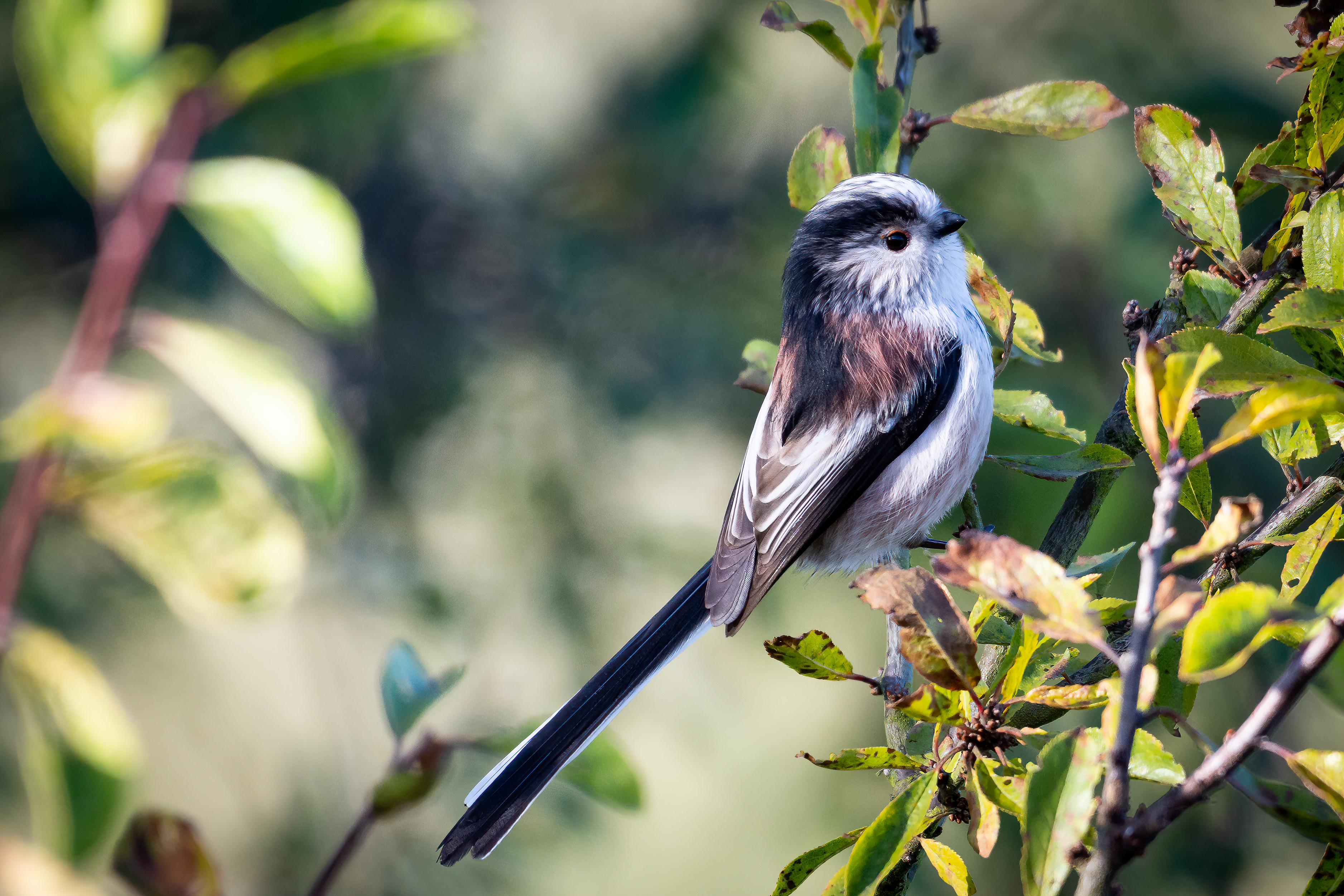Long-tailed Tit (Aegithalos caudatus) Nikon D7200, Nikon 200-500mm f/5.6
f/6.3, 1/500s, ISO 500, 480mm


My favourite small bird. It really is tiny at about 14 cm (5 1/2 in) in length but that includes its tail which is about 60% of the total. It can also weighs as little as 5g (0.18oz) which is the same as a goldcrest, but is usually a little heavier, up to 8g (0.28oz). I have seen fledglings which are truly miniscule.
They tend to live in flocks and I have seen as many as 30 at a time but more commonly around 10-15.
You will almost always hear them before you see them, they make a high pitched pip sound as they keep in touch as they flit through the trees and bushes.
I see them almost everyday on our bird feeders in the garden and they cheer me up no end as they all try to fit on one feeder.


Wow, so small yet so majestic!
Yes, they do have an air of self confidence for ones so small, a bit like my chihuahua lol
Do you know what region these are most commonly seen in?
You get them all over the UK but I have had my best sightings in East Anglia. I’ve seen them in the reed beds of Cambridgeshire and Norfolk, but they do seem to like leafy, deciduous woodland near water. In the spring and early summer they will dance through the canopy looking for insects.
Good to know, I just checked and we can also find them here in Scandinavia, so I’ll be keeping my eyes wide open for these cuties 😊
Excellent, you might be able to see the Aegithalos caudatus caudatus sub-species. It has an almost pure white head. I haven’t seen one, we get the Europaeus sub-species here.
https://ebird.org/species/lottit1